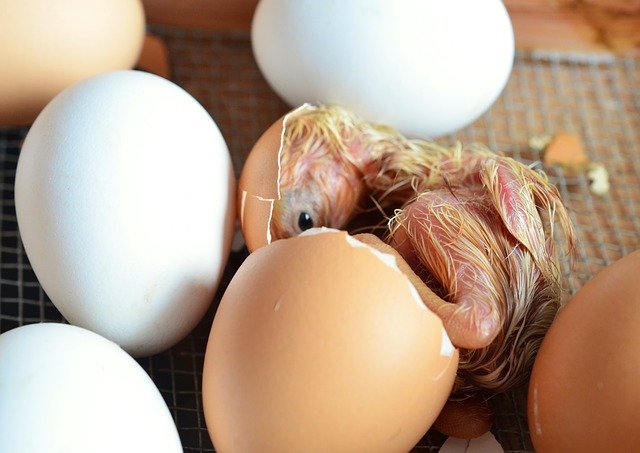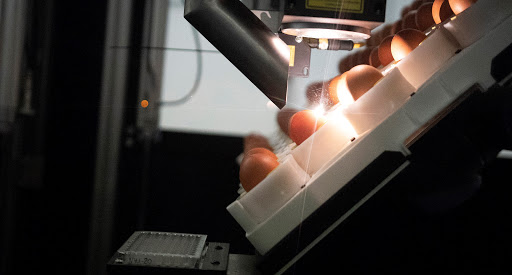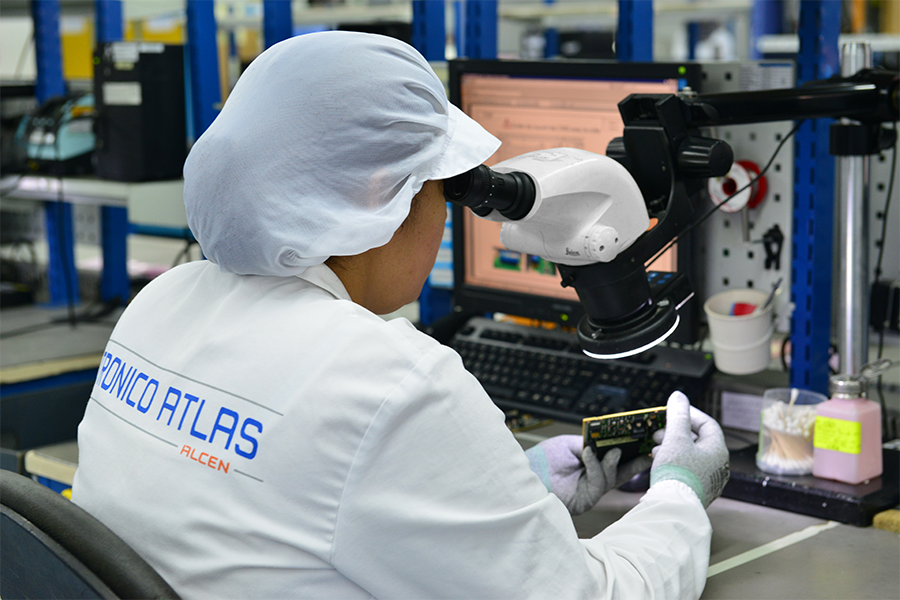Across the world, wherever eggs are produced on an industrial scale, only the females are used. Males are destroyed, by gassing or grinding, at birth. France and Germany have just taken steps to prohibit this practice from the end of 2021. It is possible that other countries will follow. The race to find a technology to sex eggs shortly after they are laid is in full swing.

On 28 January, the French Minister of Agriculture, Didier Guillaume, announced that male chick culling in the egg industry would be officially banned from the end of 2021. This announcement is part of a holistic plan to combat animal cruelty developed in cooperation with the German Minister of Agriculture who will also ban this practice. A “Franco-German consortium” has been created to develop “cooperation regarding technology and research” into alternatives to this culling.
Specific genetics for layer hens
But why do we destroy millions of male chicks as soon as they hatch? Because over several decades, through advances in genetics, now owned by several main players (Hendrix, Wesjohann, Novogen), layer hen strains are very different to those of meat chickens. The former are selected for their high egg production – today each hen lays around 300 eggs per year -; while the latter are selected for their ability to build muscle. Consequently, it does not make economic sense to raise male chicks, as they do not lay, and they grow more slowly than hens and are thus unsuitable for meat production.
 For this reason, France and Germany sacrifice some 90 million day-old male chicks every year. The same system is in place in every country with industrialised layer hatcheries. Given that, on average, a human consumes roughly the production of one hen per year, several billion chicks are destroyed as waste every year worldwide. This represents considerable food waste and also raises ethical questions about animal welfare: in fact, it was due to pressure from animal defence associations, which shared several images of chicks being shredded “alive”, that French and German ministers made the commitment to stop the practice.
For this reason, France and Germany sacrifice some 90 million day-old male chicks every year. The same system is in place in every country with industrialised layer hatcheries. Given that, on average, a human consumes roughly the production of one hen per year, several billion chicks are destroyed as waste every year worldwide. This represents considerable food waste and also raises ethical questions about animal welfare: in fact, it was due to pressure from animal defence associations, which shared several images of chicks being shredded “alive”, that French and German ministers made the commitment to stop the practice.
How do you sex an egg?
To avoid shredding or gassing male chicks when they hatch, the preferred solution seems to be in-ovo sexing, with the early disposal of future males before any sentient life appears (less than 10 days after laying). While the French and German ministers’ announcement caught everyone off guard given the short deadline (2021), research into this topic is not starting from scratch: in 2015, France commissioned a €4-million research programme into the topic. Germany started a little earlier, in 2008, and allocated €8 million to this research. Teams are also working on this topic in the Netherlands, Canada and Israel. There are probably other research programmes, but it is difficult to list them all as much of this research is protected by trade secret.

We are in the middle of a genuine “in-ovo sexing race”, and, for the moment, it is the Germans that are ahead: in fact, the only process currently used for products marketed in Germany and France was developed in Germany. Seleggt (a German-Dutch consortium) has developed a non-invasive system, based on the hormone levels on the 9th day after laying using a small sample of liquid extracted from just under the shell (without touching the embryo’s membrane). Due to slight inter-individual variations in hormones levels, the method has a 2% error rate.
Currently, it is used by a very high-end brand (PouleHouse), also known for “saving” chickens at the end of their laying career. Another French egg brand, Cocorette, has also indicated its desire to use this process and will sell its first eggs laid by hens sexed before they hatched in the next few months.
Major retailers do not want to be left out either: in early February 2020, the Carrefour group announced that it would sell eggs from hens sexed pre-hatch under its own brand. This time, it is another German technology that will be used: spectrophotometry, developed by AAT. Special cameras are able to identify differences in feather colours between males, which are lighter, and females, which are darker. The advantage of this technique is that it is quick and non-invasive. But it also has downsides: like the hormonal technique, it is not 100% accurate (a few males may be born) and what is more it can only be performed 13 days after the egg is laid, when the first feathers appear. Yet, the scientific literature estimates that the embryo becomes “sentient” from day 10, which could pose a problem with regards to reducing animal suffering.
The perfect solution is not yet ready
This handful of experiments in Europe is being conducted in niche markets. But to comply with the deadlines set by the French and German ministers, research is continuing at a good pace in laboratories to find a 100% accurate technique, compatible with the speed of the machines (20,000 eggs per hour) and with a reasonable price tag.
It is a huge commercial challenge and is not simply limited to sexing the 180 million eggs produced every year by the hatcheries in the two countries. It is likely that Europe will draw on the French and German bans to also order the end of the culling of male chicks on its territory. Other major egg producing countries (USA, Canada, etc.) may follow suit. And if the technique is developed for chicks it could also be used for ducklings in the foie gras industry: in this case, it is only the males that are force fed, and the females are destroyed.
French company Tronico’s battle to stay in the race
Tronico-Alcem is a small French electronics company based in Saint-Philbert de Bouaine in the Vendée department, France, and in Tangiers, Morocco. Since 2012, it has been looking into the topic of sexing poultry eggs, initially carrying out research using its own resources then as part of a programme financed by the French Ministry of Agriculture, in cooperation with two CNRS research laboratories.
Tronico first explored a non-invasive method: Raman spectroscopy (1). Based on thousands of observations, the researchers managed to establish a difference between the spectrums of male eggs and female eggs. “There is a significant difference, but unfortunately, it is not deterministic enough”, says Patrick Collet, CEO of Tronico. In short, there are still a few males among the hatched eggs, which does not completely eliminate the problem of culling chicks.
DNA analysis

“In 2019, with the social and media pressure surrounding this issue, and seeing the exposure of the German solution, Seleggt, we decided to drop this idea temporarily to develop a competing French solution.” The solution involves the rapid analysis of traces of the embryo’s DNA found on a fragment of shell. “As it is based on DNA analysis, this technique is 100% accurate”, Patrick Collet states.
Confident that with enough time he could develop a 100% accurate method that is compatible with industrial speeds and costs, the CEO steadfastly defends the French project, but believes that it “may not be ready for the end of 2021”. On this date, “we may have an initial prototype”. Other than time, the other thing required to carry out research is of course money: the director of Tronico makes no secret of the fact that he is looking for private or public partners to help him achieve his goal.
(1)Method for observing and determining the molecular make-up of materials based on the physical phenomenon whereby a medium slightly modifies the frequency of light shone into it.



